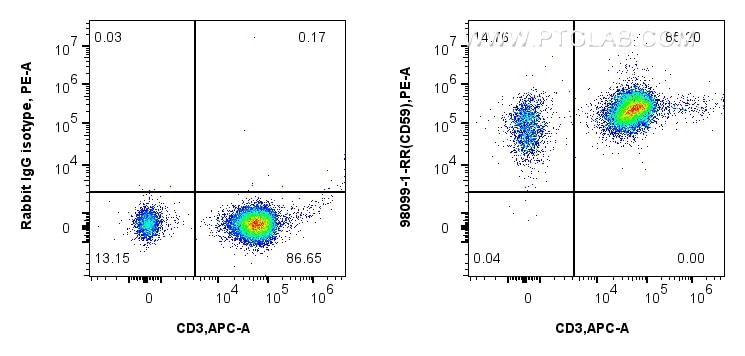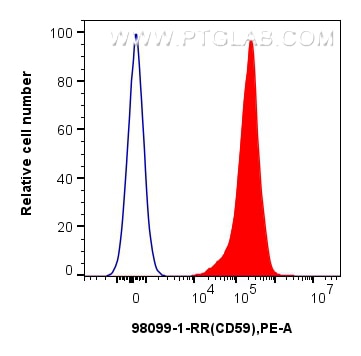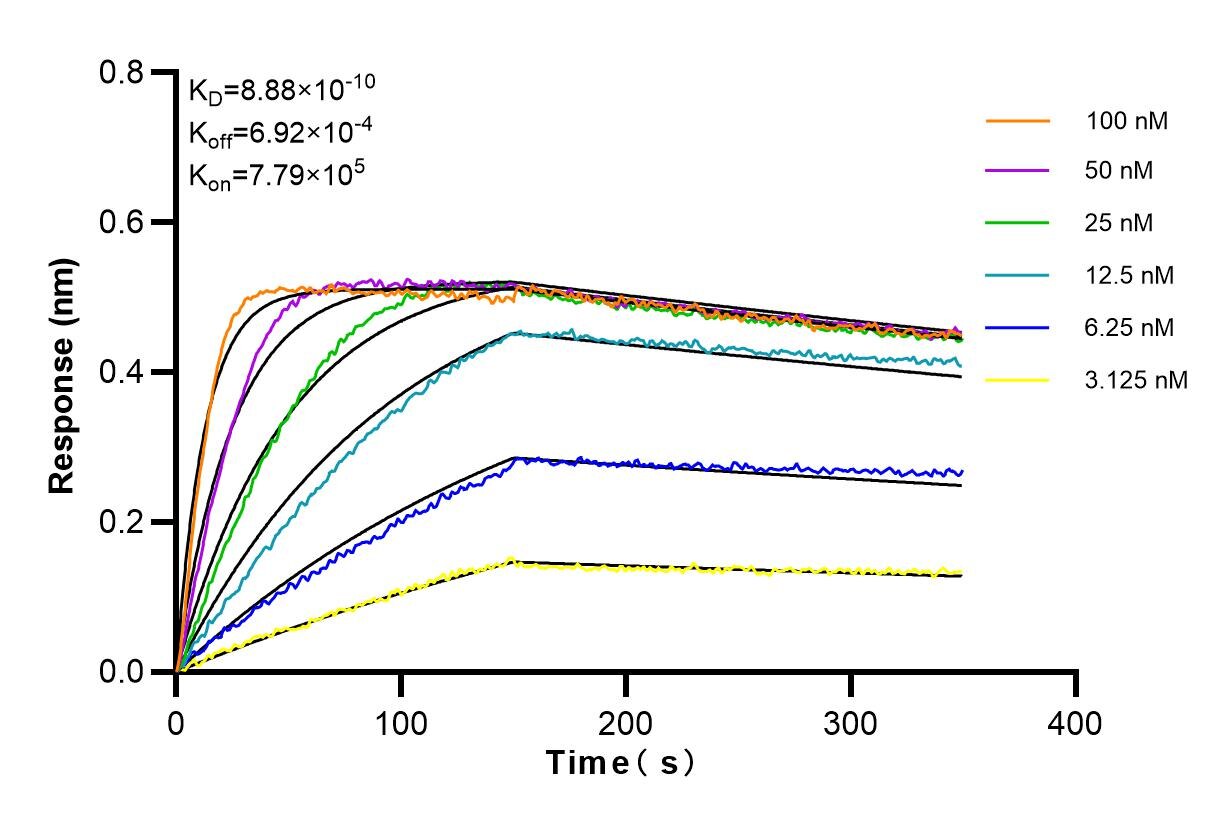Anticorps Recombinant de lapin anti-CD59
CD59 Recombinant Antibody for FC
Hôte / Isotype
Lapin / IgG
Réactivité testée
Humain
Applications
FC
Conjugaison
Non conjugué
CloneNo.
241311A4
N° de cat : 98099-1-RR
Synonymes
Galerie de données de validation
Applications testées
| Résultats positifs en cytométrie | CMSP humaines |
Dilution recommandée
| Application | Dilution |
|---|---|
| This reagent has been tested for flow cytometric analysis. It is recommended that this reagent should be titrated in each testing system to obtain optimal results. | |
| Sample-dependent, check data in validation data gallery | |
Informations sur le produit
98099-1-RR cible CD59 dans les applications de FC et montre une réactivité avec des échantillons Humain
| Réactivité | Humain |
| Hôte / Isotype | Lapin / IgG |
| Clonalité | Recombinant |
| Type | Anticorps |
| Immunogène | Protéine recombinante |
| Nom complet | CD59 molecule, complement regulatory protein |
| Masse moléculaire calculée | 19 kDa |
| Numéro d’acquisition GenBank | BC001506 |
| Symbole du gène | CD59 |
| Identification du gène (NCBI) | 966 |
| Conjugaison | Non conjugué |
| Forme | Liquide |
| Méthode de purification | Protein A purfication |
| Tampon de stockage | PBS with 0.09% sodium azide |
| Conditions de stockage | Store at 2 - 8°C. Stable for one year after shipment. |
Informations générales
CD59, also named as MIC11, MIN1, MIN2, MIN3, MSK21, MIRL, MACIF, HRF20 and 1F5 antigen, is a cell surface molecule glycoprotein with MW 18-25 kDa. It acts as a determinant of proximal-distal cell identity. CD59 acts by binding to the C8 and/or C9 complements of the assembling membrane attack complex (MAC), thereby preventing incorporation of the multiple copies of C9 required for complete formation of the osmolytic pore. It is involved in signal transduction for T-cell activation complexed to a protein tyrosine kinase.
Protocole
| Product Specific Protocols | |
|---|---|
| FC protocol for CD59 antibody 98099-1-RR | Download protocol |
| Standard Protocols | |
|---|---|
| Click here to view our Standard Protocols |






